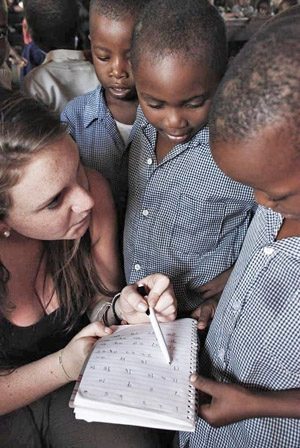By Martina Joseph – Art in Tanzania internship
The Higher Education Student Loan Scheme (HESLS) was established in Tanzania in 1994 to promote cost-sharing in higher education. After the introduction of the HESLS in 1994, loans have been funded by the government through the Ministry of Higher Education, Science, and Technology (MHEST). At that time, the government implemented several reforms aimed at enhancing the implementation of the policy. However, the most significant reform occurred in 2004 with the enactment of Act No. 9 of 2004 (CAP 178), as amended, and the subsequent establishment of the Higher Education Student Loan Board (HESLB). HESLB started operations in July 2005, and since then, loans have been advanced by the government through HESLB. The HE was established to provide financial facilitation in the form of loans to eligible and needy students, helping them cover the costs of their education (HESLB Act, 2004). In addition to increasing efficiency in the disbursement and collection of loans, HESLB is also assigned two primary tasks. The task of establishing a mechanism for determining eligible and needy Tanzanian students for loan payment is to increase equitable access to technical and higher education, and to create a well-performing, sustainable student loan fund (URT, 1998)





Based on the economy and the cost of education as per public institutions, HESLB shall set a ceiling for each student. The ceiling depth depends on the university one attends and the courses one pursues. The plan was to lend money only to eligible and needy poor students, but there is still a challenge in identifying them. Moreover, HESLB has increased my involvement in the decision-making process regarding some strategic issues, such as student selection for enrollment. Classification, determination of fees charged for higher education, selection of overseas students, and improvement of the legal framework for enforcing collection. Similarly, the repayment terms for the loan are incredibly generous and apply broadly. R payments are spread over several years, allowing a one-year grace period. The percentage shall be fixed at 8% of the basic salary instead of the gross salary. The repayments shall be in nominal terms, and the loans shall be based on gross pay, and the loans are interest-free.
Issues raised about Student loans in Tanzania
Is the loan sufficient
A study conducted by Ally (2015) showed that the ceiling amounts for students to borrow for each loan item are as follows: maximum Tuition fees, Tshs 3,600,000.00 (US$2,250). Mals and accommodation Tshs 7,500.00 per day (US$4.69), books and stationery Tshs 200,000.00 (US$125) per annum. Additionally, field practical and teaching practical work expenses amount to HK$560,000 (approximately US$70,000) per year. In summary, the amount given to the student in a year is relatively higher compared to that of its neighbouring country, Kenya. Evidence (e.g., from Tanzania) shows that, in many cases, governments do not allocate sufficient financial resources to enable loan schemes to meet their statutory obligation of issuing loans to needy students. The majority of universities in Africa operate with lean budgets that cannot cover their operational costs and absorb the rising costs of higher education and expanded enrollments. I have adequate financihave al resources, which is largely due to dependence on government funding (Kossey, M, & Ishengoma, J, 2017)
Challenges Related to Management and Administration
Observation and documentary evidence indicate that top managers and administrators, as well as employees of most student loan schemes, are not professionals trained in disciplines relevant to student financing. For example, one of the longest-serving tutors of a student loans scheme in one of the countries mentioned above trained as a linguist. In Tanzania, the chief executive officer and chairperson of the HESLB’s Board of directors are appointed by the president. It implies limited independent decision-making and vulnerability to political pressure and manipulation, leading to decisions that favour the established or ruling party.
Do students get the loans on time?
In November 2008, students at the University of Dar es Salaam protested over student loans. E. Nest Sylivester (2008) wrote that protests have been occurring at the University of Dar es Salaam after the Student Loans Board announced this month that some 810 students had not met the funding requirements. Students threaten to boycott tests for students who were admitted to universities and had applied for loans but did not receive them. Hunot received students from several universities who visited the Higher Education Students’ Loan Board (HESLB) to check on their lending, nd they demanded a reevaluation of the loan ‘grades’ they had been allocated. There were complaints that some students who qualified for loans had not been awarded them, while others who did not meet the requirements had received loans nonetheless. It is to illustrate that, in some cases, students do not receive their loans on time.
Furthermore, a study conducted by Kossey and Ishengoma (2017) found that 86% of the student respondents reported not receiving loans on time. In extreme cases, some students did not receive their loans for a whole semester. Officials admitted that there had been delays in loan disbursements because the government does not release requested funds to the Board on time.







Would it be done? (Recommendation)
The problems faced by HESLB in Tanzania are not unique; several financial organisations in Kenya, South Africa, and many other African countries experience the same issues. However, the following recommendations can be implemented to see an improvement in our higher education financing.
- Diversification in funding.
The Board should diversify its sources. This can be achieved by undertaking other revenue-generating activities, significantly reducing its dependence on the government. It should explore partnerships with potential financiers, such as banks and companies. As a result, funding has partnered with an education company based in the United States to increase its budget (2013). The Board also partners with Intra Health of Kenya to provide loans to students pursuing medical and health-related qualifications. The HESLB could consider borrowing from international banks such as the Af, African Development Bank and the World Bank.
2. Mandatory Repayment of HESLB loans
It should be done through direct deductions by employers from loans beneficiaries’ salaries, as with income tax and social security funds. This would reduce the cost of the loan for the beneficiary—aA vi—ae an. A viable and innovative framework could be strengthened if the National Identification Authority were to partner with the National Identification Authority, which would provide identification numbers to all loan applicants that could be used to track beneficiaries employed in the formal sector. This strategy has been employed by the HELB in Kenya.
3. Rising awareness
Aggressive public education and campaigns are necessary to convey the meaning and importance of student loans and loan repayment. This approach has been very successful in Ghana.
4. Improvement on Eligibility criteria
It is suggested that HESLB needs to improve its mechanisms for determining who is eligible for the loan so that it can reach the most needy and poor students who need it the most. To make it happen, it must cultivate a good relationship with other players, such as secondary schools, the Tanzania Tax Authority, and other entities that HESL collaborates with to utilise its income.
5. H SLB should be given full autonomy. The government should provide HESL with full autonomy in making decisions on specific strategic issues, such as the categorisation of priority courses for enrollment, tuition fees charged in higher education, and the legal framework to enforce collection.
REFERENCES:
Ally, A. M. (2015). Stainability of Higher Education Students’ Loan Scheme (HESLS) in Tanzania. e European Journal of Business and Management, Vol. , No.9)
Ernest, S. (2008). NZANIA: Students warn of protests over loans. University World News African Edition. Retrieved from https://www.universityworldnews.com/post.php?story=20101127105458638 on 06/03/2021.
HESLB Act number 9 of 2004 CAP 178
Kossey, Masumbuko & Ishengoma, Johnson. (2017). I Uses and Challenges of Student Financing Systems in Africa: The Case of Tanzania. International Journal of African Higher Education. 4 10.6017/ijahe.v4i1.10250.
Nganga, G. (2014 November). Student loan systems restructured across
East Africa. World University News, Issue No. 296
Nganga, G. (2014 November). Student loan systems restructured across
East Africa. World University News, Issue No. 296
Nganga, G. (2014 November). Student loan systems restructured across East Africa.WorlddUniversitiess, Issue No. 296 The UnitedRepublic of Tanzania:l Sustainability of Higher Education in Tanzania: A Report of the Task Force on Financial Sustainability of Higher Education in Tanzania. D r es Salaam: Ministry of Science, Technology and Higher Education





